
1966 ISO Grifo – faster than a Ferrari or Lamborghini, with handling to match. the brainchild of a fridge-maker, the Iso Grifo is the ultimate almost unknown Italian supercar. Story Tony Haycock and photos Tony Haycock, Peter Lyttle.
Is there anything which reads better than this for a car built in 1966? Three hundred and fifty horsepower – that’s 261kW in the new money; 257km/h; five-speed gearbox. Chassis and suspension by Bizzarrini (ex Ferrari and Lamborghini). Body by Giorgetto Giugiaro, as in Nico Betone’s young protégé. Here is a car which was intended to be the ultimate Gran Tourismo, and which did deliver on the intent.
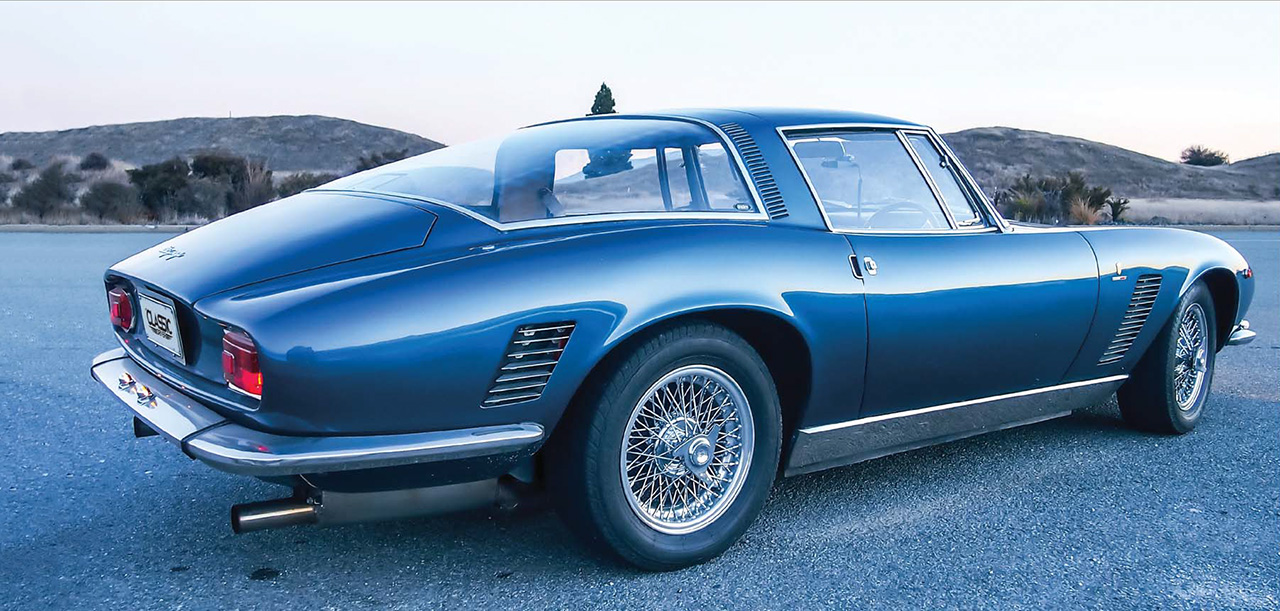
Down in South Canterbury, Peter Lyttle was more than happy with the car he owned – until the day he was flipping through a copy of Classic and Sportscar. The story was a comparison of Chevrolet Corvette, Aston Martin’s DB6, a V8-engined AC, Jaguar E-Type and an Iso Grifo. He had never seen or heard of an Iso, but it was, the most beautiful car I have ever seen.” The added bonus of some solid reliable American power clothed in a top-quality Italian suit aided the decision process. He had to have one, and the search was on.
The magazine had the Jaguar come out on top in its test, the decision based to some degree on the cost of the cars when new and current values, equally a British magazine will generally favour the home-grown product. But even the British had to admit that when taking money out of the equation, the Iso stood head and shoulders above its very competent competition. When The Autocar, a publication noted for factual and very unbiased reporting on new cars, tested a Grifo in April of 1966, it summed it up thus, “… eye-catching Bertone body with high-class finish and thoughtful detail. Comfortable ride, excellent roadholding, sensitive brakes and phenomenal acceleration all take the strain from driving. A Grand Touring car par excellence.
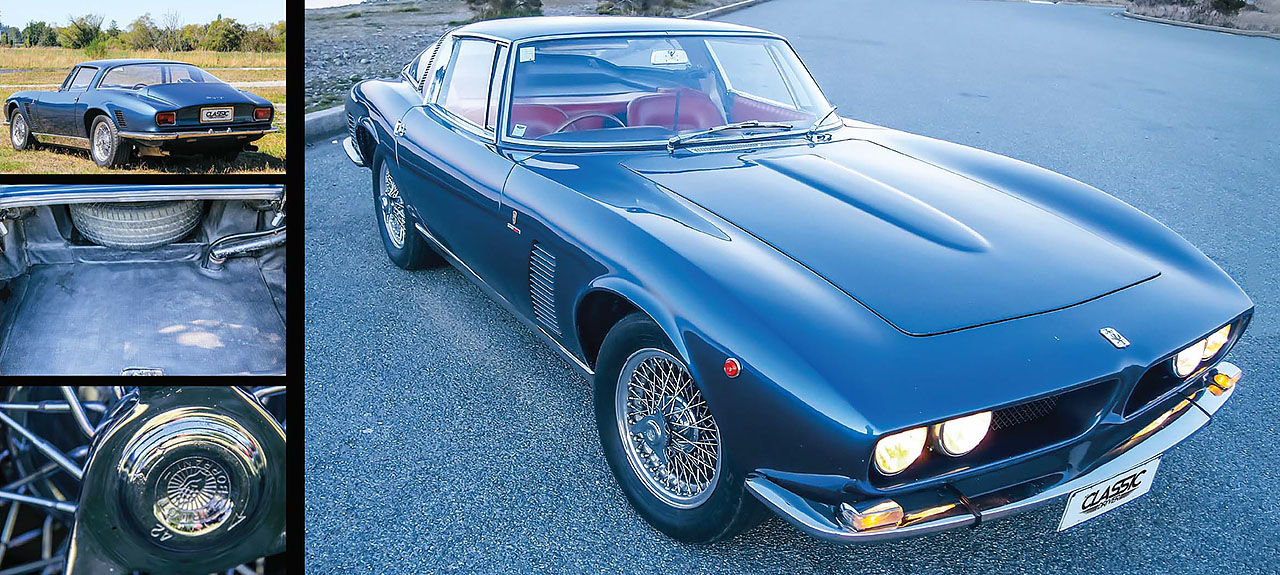
The size of the huge rear window is evident from this angle. This is the original boot mat.
Let us not forget that 20 years previous to this, Iso as a car maker did not exist. Prior to WWII, Renzo Rivolta’s company, Isothermo, manufactured refrigerators. After the war, the Bressobased industrialist saw an immediate need for very low-cost motorised transport as Italy, like much of Europe, struggled to recover from the devastation wreaked upon it by the war. The new business based its future on motor scooters and three-wheeled motocarries under the Iso brand. Heading into the ’50s, Rivolta saw the economy improving and upgraded the company product to encompass the emerging bubble-car boom with its best-selling product, the front-entry three wheeled-Isetta. It was licenced to makers throughout Europe, and the Germans made the most of it with their BMW-badged variant, even exporting it as far away as New Zealand, and BMW’s production of the cheeky little car, later improved by the addition of a fourth wheel, far outstripped the 20,000 made in the Iso works near Milan. The financial success of the diminutive Isetta then allowed Iso to take advantage of the booming 1960s with its pair of supercars, the four-seat Iso Rivolta and the smaller, faster Grifo.
Peter’s search for a suitable car ended in the UK with chassis 077/D. It ticked all the boxes. Number one, it was one of the 35 factory-built righthand- drive cars. While the majority of Grifos used a four-speed Borg-Warner gearbox, this one had the optional five-speed ZF. Standard fitment was Cromadora magnesium alloy wheels, but Borrani wires were available at extra cost, and 077/D left the works on September 12, 1966 thus equipped, and with the 5.4-litre (327ci) engine in 261kW (350hp) tune — 224kW/300hp was the standard offering. It is quite likely to be the only Grifo built to this specification, RHD with every option fitted. Information from the Grifo register indicates this was the actual car used by Iso for the 1966 London Motor Show.
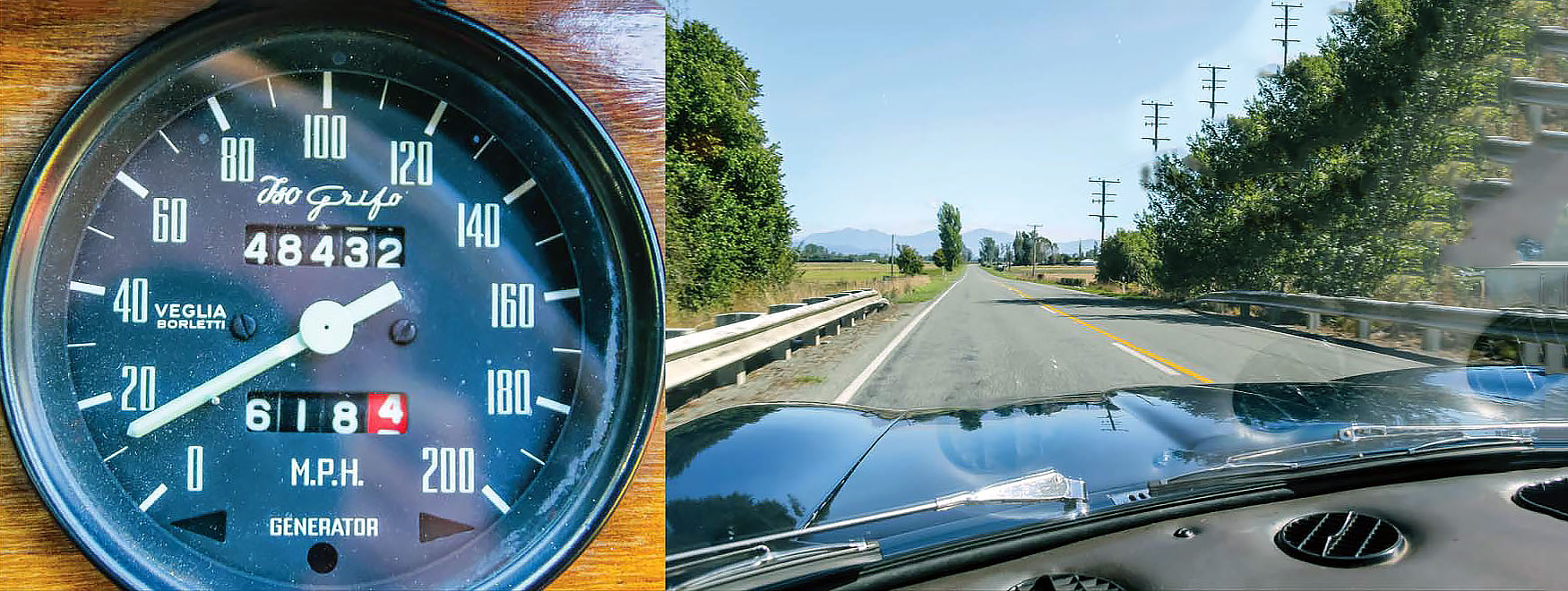
With a top speed of 257km/h, or 160mph in the old money, a 200mph speedo is not just for ego purposes.
Rumours that Italian cars of this era are noted for their propensity to rust have been proved correct, so this was a concern for Peter, but it seemed that this one was the exception. When it arrived in New Zealand the car had only covered 36,397 miles (58,575km), and 32,533 of those had been accumulated prior to 1974. The second owner, who had it from 1969 to 1989, had the car laid up, part of the deal in selling it was he recommissioned it for the next owner. In the next 15 years it did a mere 1000 miles. Leading an interesting life, it was stolen in 1994 from its home in Birmingham, not to be recovered until 2007. Its life on the run from the law was possibly the best thing which could have happened to it. Every year it spent locked away from prying eyes was another winter of salty winter roads avoided, and no wear and tear.
The sale to Peter wasn’t entirely straightforward. It took quite some time to make contact with the owner, and by the time he had been tracked down he had changed his mind and the Iso was no longer for sale. Then later he found a car he HAD to have. Peter got a phone call from the UK, “Are you still interested in the car?” Too right he was, a deal was negotiated, and the car was on its way. Arriving in New Zealand the Iso was every bit as good as Peter had hoped, but putting it through the compliance process revealed a problem which seems to be rather prevalent these days. There was in the floor a clearly evident small rust patch. Normal for a 1960s car, amazingly miniscule for an Italian car, it was a very minor piece, clearly visible and easily repaired. But… Oh no, if the car is to be put on the road here, not only is the rust to be repaired (not unreasonable), but every millimetre of the factory underseal needs to be removed from the underside of what is quite clearly a particularly sound and solid motor car for it to be inspected before the next part of the process can happen.
“At 100mph the only sound you can hear is the Italian sports car you were passing.”
So, with the interior removed to protect it and a hoist purchased and installed to elevate the car, Peter taped a plastic ‘skirt’ to both sills, extending to the floor on either side, created a sealed wind tunnel between car and the end of his garage, and with a large fan in front blowing toward the garage door he proceeded to (VERY carefully) sandblast the underside of the Iso to remove acres of perfectly sound underseal, protecting perfectly sound metal. A word of warning, do not attempt this yourself unless you, like Peter, are very experienced with sandblasting. Too much pressure, the wrong technique, or using the wrong blasting media and it is frighteningly easy to completely destroy perfectly good metal. With the car now stripped, the opportunity was taken to cavity wax the bodywork and hopefully ensure that the dreaded rust does not show its ugly face in the future. At the same time, Auto Restorations was entrusted with the job of fixing a couple of earlier panel repairs, while retaining the originality of this amazingly lowmileage car. As Peter put it, getting the car on the road in New Zealand was “a very time-consuming exercise.” And let’s not forget that right through this process, he had yet to drive this, or for that matter, any other Iso Grifo, so what was his first impression of driving the car? “Better than expected!”
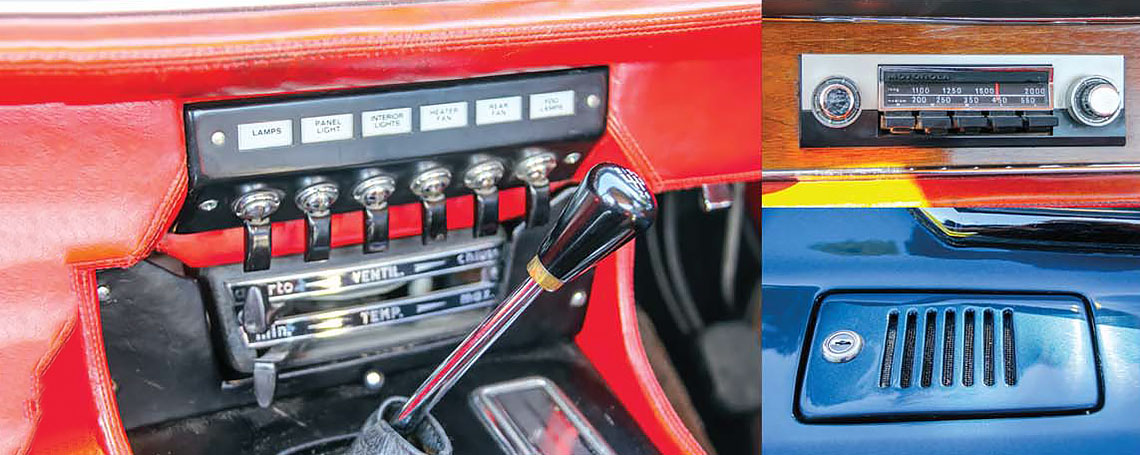
Anyone foolish enough to dismiss this as another underdone Euro/American hybrid is in for a big surprise. The chassis, the work of Giotto Bizzarrini before his rather acrimonious split with Renzo Rivolta, was arguably the most technically advanced of any Gran Turismo marque of the day. Bizzarrini was one of a number of Ferrari’s top chassis men who attempted a palace coup, and for his efforts was swiftly shown the door, where he promptly set up shop to work for the likes of Lamborghini as well as Iso. A de Dion rear axle with inboard disc brakes, located by twin radius arms, a Watts linkage and coil springs is, even today, as good as it gets. The front is served by unequal length wishbones, telescopic shock absorbers with coil springs and Dunlop disc brakes.
Engines were purchased from General Motors, the smallblock 327ci (5.4 litre) V8 coming from the Corvette. On arrival in Italy the motors were then stripped, blue-printed and reassembled, with the 350hp version getting Iso’s own forged conrods and bespoke aluminium sump, finned to improve heat dissipation. As a comparison, the V12 engine in the equivalent Ferrari, the 330, was making 224kW/300hp, so the choice of the American unit should be seen as a positive when considering the Iso’s position in the hierarchy of Italian muscle.
When mated to the ZF gearbox, as Peter’s car is, changing gear at the 6000rpm redline drops the revs to 4000, right where the lusty V8 is producing its best power and torque. In this car, engine and gearbox seem perfectly suited. Happy to pull from 50km/h in third gear (488Nm of torque does wonders for low-speed drivability, another advantage of the relatively understressed V8) it will reach 209km/h in the same ratio. If the driver isn’t in the mood to swap ratios in the excellent ZF five-speeder, the Grifo is perfectly happy to amble along all day at any speed in fourth. At 160km/h it is still only pulling 3200rpm, with 2800rpm left and another gear sitting, waiting to be used. At full stretch, the Grifo will top a genuine 257km/h (160mph), a clear 12.8km/h ahead of the Ferrari 330, probably the closest competitor.
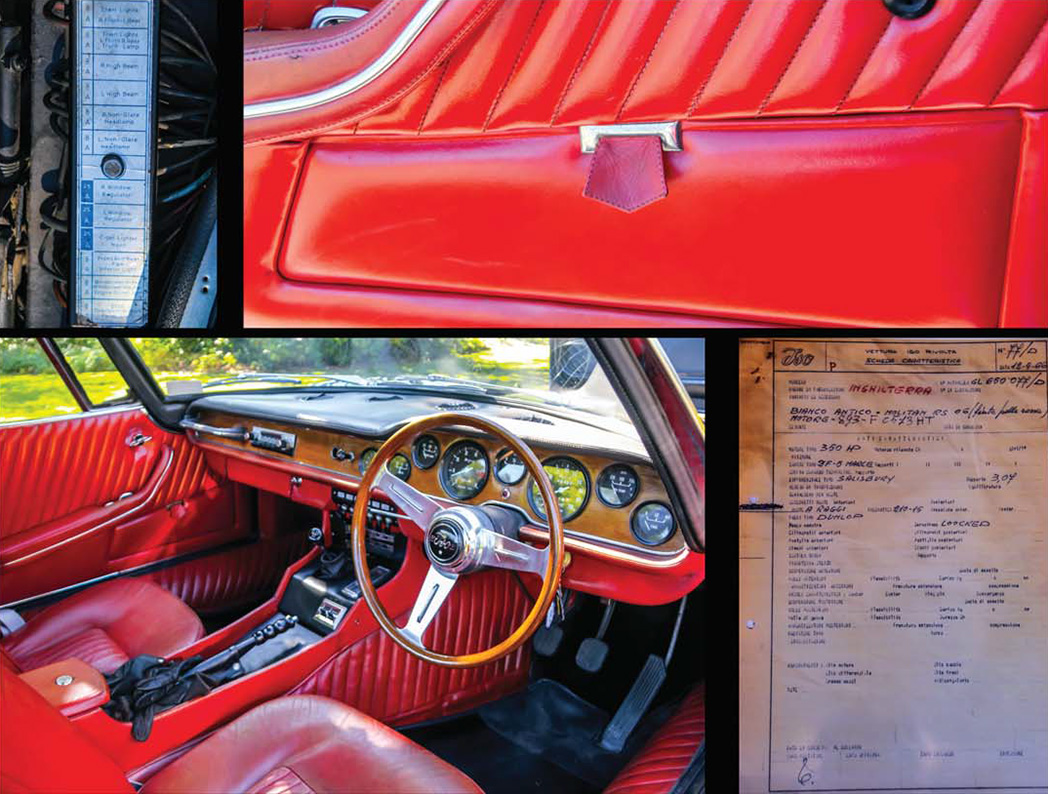
Hard to believe that the all paddedleather interior is the original. The factory build sheet. Even the map pockets in the doors are all style.
After it lead such a sheltered life in Britain, things are now a little different for Iso 077/D. I first saw it at the Hawkeswood sprint three years ago, and was stunned by just how good it looked, parked in a grassy paddock waiting its turn on the course. I was even more stunned when I saw it leave the start line with a V8 roar, the chromed Borranis initially spinning, wreathed in a shroud of blue smoke before the Pirellis gripped and the long, low blue coupé disappeared out of sight on the first downhill section of this quite challenging event. Clearly here was a car which was driven in the manner the maker intended. Since it was put back on the road in February 2010, Peter has clocked up 19,312km (12,000 miles) in the Iso, and I bet every single one has been done with a huge smile on his face. One of his greatest pleasures is to take the car out of an evening alone, just he and his car, for a long and enthusiastic drive on some of the great back-country roads of South Canterbury, and it was on these roads that I was treated to a demonstration of exactly what a 1960s supercar can do, in the hands of a driver who really knows his car and what it is capable of. The performance and the lack of back seats say supercar, even though the huge boot and luggage area inside, along with great legroom and visibility, support the case for calling it a Gran Turismo. Either way, here is car which delivers, on the road, the promises the styling makes when parked.
Sitting low in the red leather seats (the interior of the car is 100 per cent original), two things are immediately obvious. Firstly, unlike many coupés of the era, with the big Chevrolet V8 idling, inside the car is almost silent. Secondly, as I mentioned and unlike almost every coupé of the era, visibility is outstanding and legroom is even better. The legroom was one of the reasons for the falling out between Bizzarrini and Rivolta. Bizzarrini wanted the engine to be mounted further back in the chassis to improve handling. Rivolta wanted room in the cabin for normal-sized people to fit inside, and as he was paying the bills, he won that particular argument. With the final article boasting a 49:51 front : rear weight distribution, it isn’t like handling was sacrificed in any way in favour of comfort. Yet when Bizzarrini went on to build his own cars later (basically a re-engineered Grifo), he had the motor located so far back in the engine bay that the distributor was accessed via a trap door in the top of the dash.
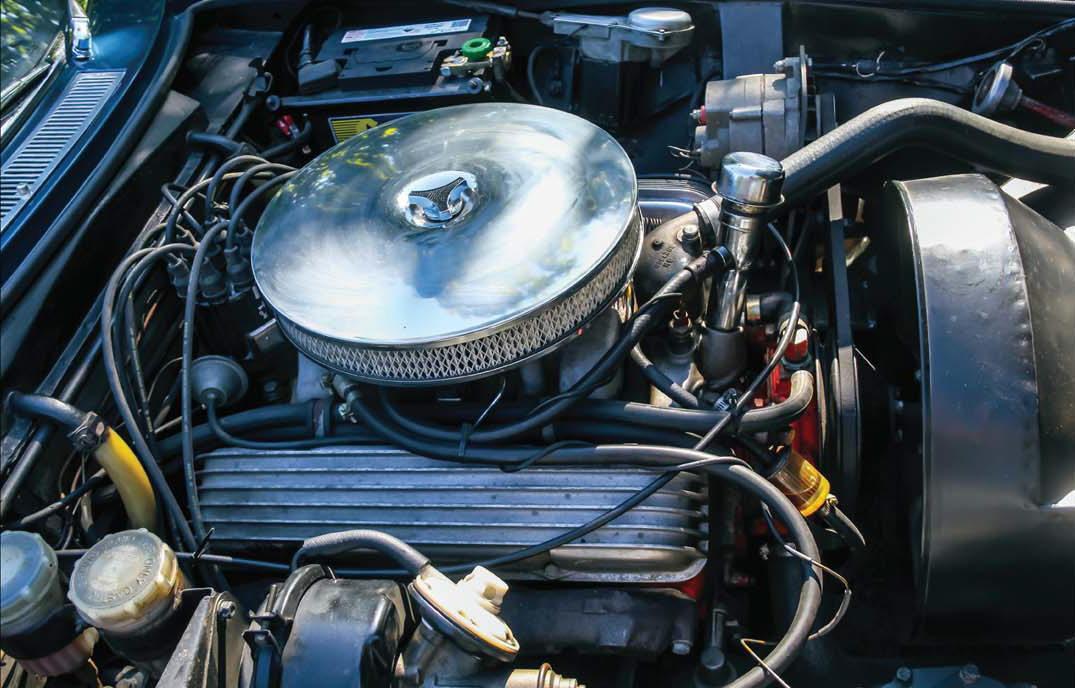
327ci of Chevrolet V8 produces 261kW/350hp with a little tweaking from Iso.
The end result of the combined efforts of Rivolta, Bizzarrini and Bertone is a superbly quiet, comfortable cruising car, with both comfortable seats and compliant suspension. The sort of thing which will quietly waft along in what seems to be cosseted luxury. Then Peter gave the throttle a decent prod. Nearing the 6000rpm redline the engine still doesn’t sound stressed, and the cabin still remains a serene place to be, but the white line in the centre of the road takes on a blurred appearance, and roadside features are soon in our wake. Approaching a corner the fourwheel disc brakes pull up the car almost more efficiently than the dramatic way in which it gathered speed in the first place, and seemingly without any effort at all Peter was guiding what is a big car from corner to corner with a minimum of effort from the steering, while demonstrating how Bizzarrini had managed to develop suspension which is able to absorb the humps and bumps of rural New Zealand roads, which shouldn’t be any surprise. As anyone who has driven in Northern Italy will know, the roads there make many of ours look like billiard tables by comparison, so he would have plenty of experience of them. Yet it still has the ability to take corners with no hint of body roll and with grip levels which would put many newer, supposedly performance cars to shame.
Nearing the 6000rpm redline the engine still doesn’t sound stressed, and the cabin still remains a serene place to be.
This is a real Jekyll and Hyde car. Driven like a family sedan it will idle along in any gear you chose at 1000rpm. Two adults of normal human-sized proportions, or even slightly larger, will struggle to find a more comfortable automotive conveyance, with more than enough space for everything needed for an extended motoring holiday. And when the time comes to press on a little, refinement doesn’t suffer, kidneys are not shaken loose and eardrums are not assaulted. What happens is that the distance from point A to point B appears to have magically halved yet, as a contemporary American motoring magazine said at the time, “At 100mph the only sound you can hear is the Italian sports car you were passing.”
I will leave the final words to The Autocar. “…everyone seems to stop and stare appreciatively … we were embarrassed by the attention and worried by other drivers who took their eyes off the road for a better look … it is superbly built, has the highest top speed of any production car we have tested, yet has road manners more sweet and docile than any other high-performance machine.





